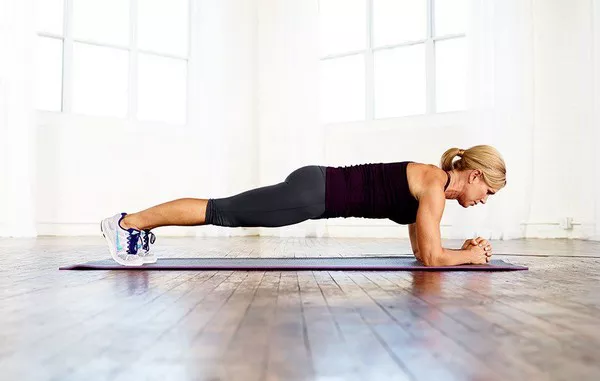Strength training, traditionally associated with lifting weights, is a vital component of overall fitness, aiding in muscle development, bone health, and metabolic efficiency. However, many people are deterred by the perceived necessity of gym equipment. This article explores how to engage in effective strength training without weights, leveraging the power of bodyweight exercises and other innovative techniques. Let’s delve into the principles, benefits, and a comprehensive guide to a weight-free strength training regimen.
The Fundamentals of Bodyweight Training
Bodyweight training uses the individual’s weight to provide resistance against gravity, enhancing muscle strength and endurance. This form of exercise is not only accessible but also highly adaptable, making it suitable for various fitness levels and goals.
Benefits of Strength Training Without Weights
Accessibility: No need for expensive gym memberships or equipment. Bodyweight exercises can be performed anywhere, anytime.
Functional Fitness: These exercises mimic everyday movements, improving overall functionality and reducing the risk of injury.
Improved Balance and Coordination: Many bodyweight exercises require balance and stability, enhancing neuromuscular coordination.
Scalability: Exercises can be modified to match the fitness level of any individual, from beginners to advanced athletes.
Principles of Effective Bodyweight Training
To maximize the benefits of bodyweight training, it is crucial to understand and apply the following principles:
Progressive Overload: Gradually increasing the difficulty of exercises to continue challenging the muscles.
Variety: Incorporating a range of exercises to target different muscle groups and prevent plateaus.
Proper Form: Ensuring exercises are performed with correct technique to avoid injury and maximize efficiency.
Consistency: Regular training is essential to achieve and maintain strength gains.
Core Exercises for a Comprehensive Routine
1. Push-Ups
Push-ups are a cornerstone of bodyweight training, targeting the chest, shoulders, triceps, and core.
Standard Push-Up: Begin in a plank position, hands shoulder-width apart. Lower your body until your chest nearly touches the floor, then push back up.
Variations: Modify push-ups by adjusting hand placement (diamond, wide, staggered) or incorporating elevation (decline, incline).
2. Pull-Ups and Chin-Ups
Pull-ups and chin-ups are excellent for developing upper body strength, particularly in the back and biceps.
Pull-Up: Grip a bar with hands shoulder-width apart, palms facing away. Pull yourself up until your chin is above the bar, then lower slowly.
Chin-Up: Similar to pull-ups but with palms facing towards you, emphasizing bicep engagement.
3. Squats
Squats are fundamental for lower body strength, targeting the quadriceps, hamstrings, glutes, and calves.
Bodyweight Squat: Stand with feet shoulder-width apart. Lower your hips back and down, keeping your chest up and knees over toes, then return to standing.
Variations: Experiment with sumo squats (wider stance), pistol squats (single leg), and jump squats for added intensity.
4. Lunges
Lunges enhance leg strength and stability, working the quadriceps, hamstrings, glutes, and calves.
Forward Lunge: Step forward with one leg, lowering your hips until both knees are at 90-degree angles. Push back to the starting position and repeat on the other leg.
Variations: Try reverse lunges, walking lunges, and lateral lunges for variety.
5. Planks
Planks are superb for core stability, engaging the abdominals, back, and shoulders.
Forearm Plank: Support your body on your forearms and toes, maintaining a straight line from head to heels. Hold the position, keeping your core tight.
Variations: Side planks, plank reaches, and plank to push-up transitions add challenge.
6. Dips
Dips target the triceps, chest, and shoulders.
Bench Dip: Sit on a bench with hands beside you, fingers forward. Slide off the bench, lowering your body by bending the elbows, then push back up.
Variations: Use parallel bars for more difficulty, or elevate your feet.
7. Glute Bridges
Glute bridges focus on the glutes, hamstrings, and lower back.
Standard Glute Bridge: Lie on your back with knees bent and feet flat. Lift your hips towards the ceiling, squeezing your glutes at the top, then lower back down.
Variations: Single-leg bridges and hip thrusts increase difficulty.
Calisthenics for Advanced Strength
For those seeking more advanced bodyweight training, calisthenics offers a dynamic and challenging approach.
8. Handstands and Handstand Push-Ups
Handstands build shoulder and core strength while improving balance.
Handstand: Practice against a wall initially. Kick up into a handstand, keeping your body straight and core engaged.
Handstand Push-Up: Once stable, lower your head towards the ground and push back up.
9. Muscle-Ups
Muscle-ups combine a pull-up and a dip, requiring significant upper body strength and coordination.
Technique: Start with a pull-up. As your chest reaches the bar, transition into a dip motion to push your body over the bar.
10. Planche
The planche is an advanced static hold that demands full-body strength, particularly in the shoulders, core, and wrists.
Training Progression: Start with tuck planches, gradually extending your legs as strength increases.
Building a Balanced Routine
To develop a balanced strength training routine without weights, consider the following weekly plan:
Day 1: Upper Body Push
Push-Ups (Standard, Decline, Diamond): 4 sets of 10-15 reps
Dips (Bench or Parallel Bars): 3 sets of 8-12 reps
Planks: 3 sets of 60 seconds
Day 2: Lower Body
Bodyweight Squats: 4 sets of 15-20 reps
Lunges (Forward, Reverse): 3 sets of 10-12 reps per leg
Glute Bridges: 3 sets of 15 reps
Day 3: Upper Body Pull
Pull-Ups/Chin-Ups: 4 sets of 6-10 reps
Bodyweight Rows: 3 sets of 10-12 reps
Forearm Planks: 3 sets of 60 seconds
Day 4: Rest or Active Recovery
Light activities like walking, stretching, or yoga.
Day 5: Full Body
Burpees: 3 sets of 10 reps
Jump Squats: 3 sets of 15 reps
Mountain Climbers: 3 sets of 30 seconds
Day 6: Core Focus
Leg Raises: 3 sets of 12-15 reps
Russian Twists: 3 sets of 20 twists
Side Planks: 3 sets of 30 seconds per side
Day 7: Rest
Progression and Monitoring
To ensure continual progress:
Track Your Workouts: Keep a journal to log exercises, sets, reps, and variations.
Increase Intensity Gradually: Add reps, sets, or advanced variations as you become stronger.
Listen to Your Body: Rest when needed to prevent overtraining and injuries.
Incorporate New Exercises: Periodically introduce new movements to keep workouts challenging and engaging.
Nutrition and Recovery
Strength training is complemented by proper nutrition and recovery strategies.
Balanced Diet
Protein: Essential for muscle repair and growth. Include lean meats, fish, eggs, dairy, legumes, and plant-based proteins.
Carbohydrates: Provide energy for workouts. Opt for whole grains, fruits, and vegetables.
Fats: Support overall health. Include sources like avocados, nuts, seeds, and olive oil.
Hydration: Maintain adequate hydration, especially during intense workouts.
Recovery Techniques
Sleep: Aim for 7-9 hours per night to facilitate muscle repair.
Stretching and Mobility: Incorporate stretching or yoga to enhance flexibility and prevent stiffness.
Massage and Foam Rolling: Use these techniques to relieve muscle soreness and improve circulation.
Conclusion
Strength training without weights is a versatile and effective method to build muscle, improve functionality, and enhance overall fitness. By understanding the principles, incorporating a variety of exercises, and maintaining consistency, anyone can achieve significant strength gains without the need for traditional gym equipment. Embrace the power of bodyweight exercises, and transform your fitness routine with these accessible, scalable, and efficient methods.
[inline_related_posts title=”You Might Be Interested In” title_align=”left” style=”list” number=”6″ align=”none” ids=”9365,9294,9291″ by=”categories” orderby=”rand” order=”DESC” hide_thumb=”no” thumb_right=”no” views=”no” date=”yes” grid_columns=”2″ post_type=”” tax=””]
































